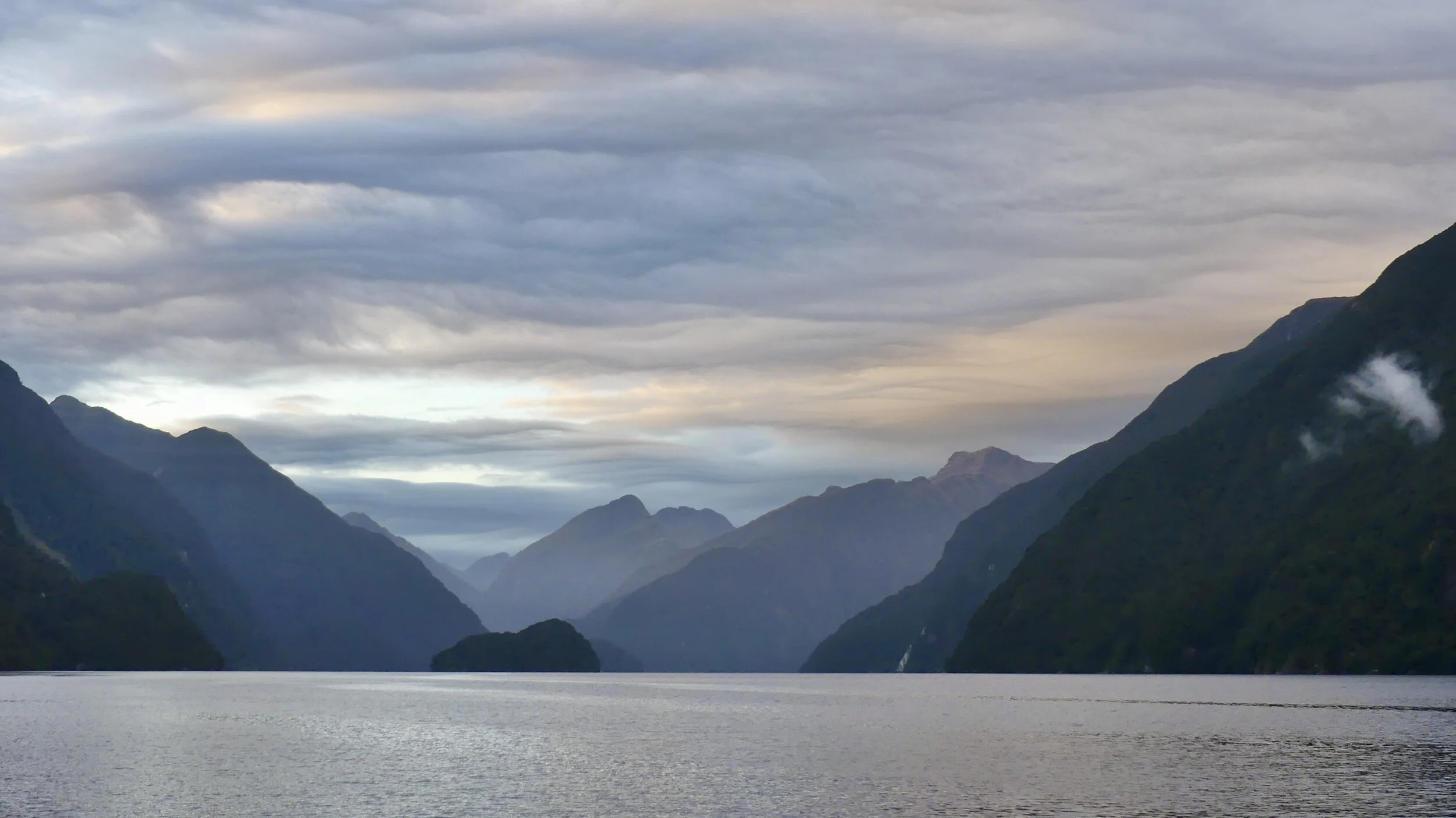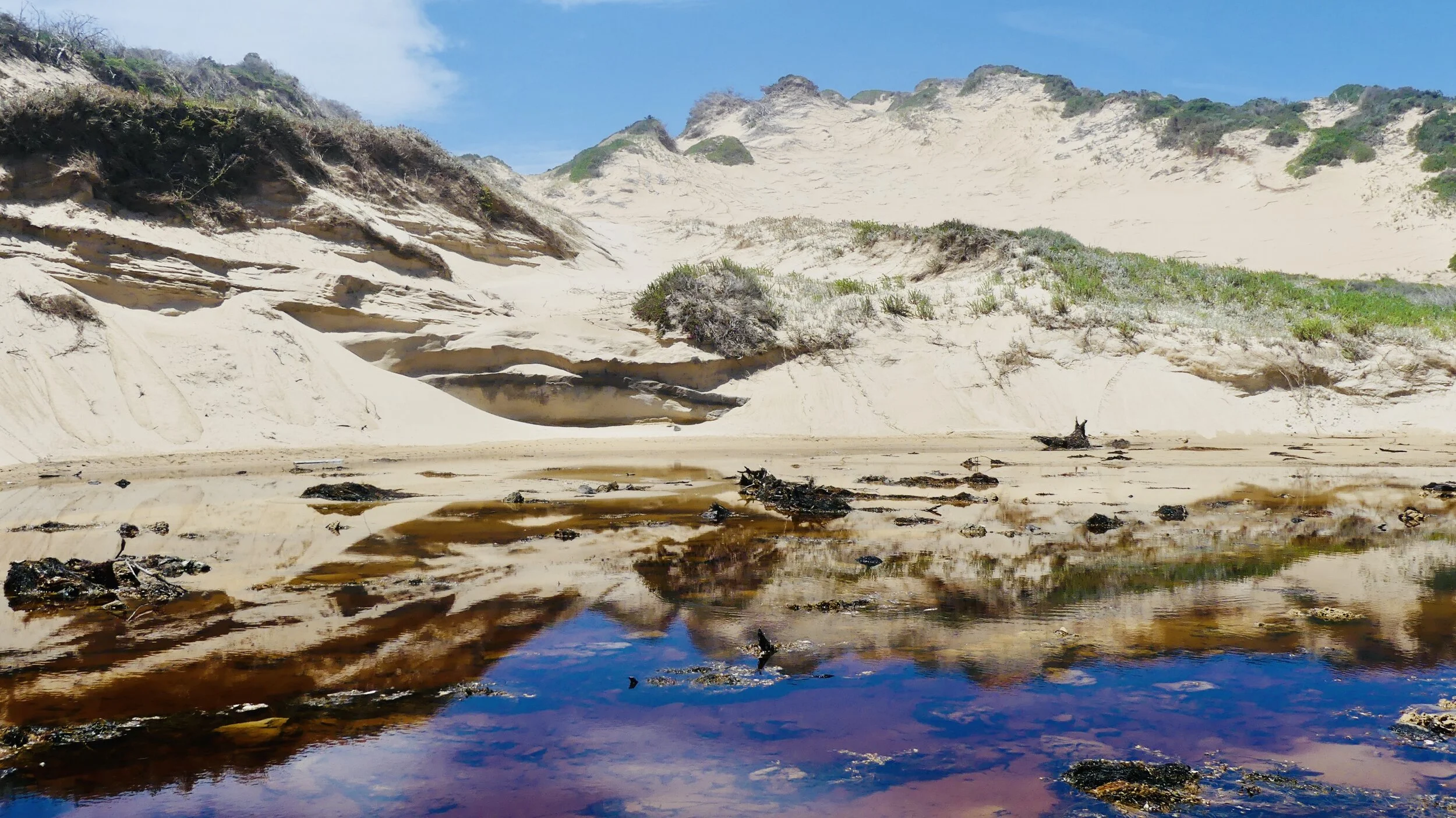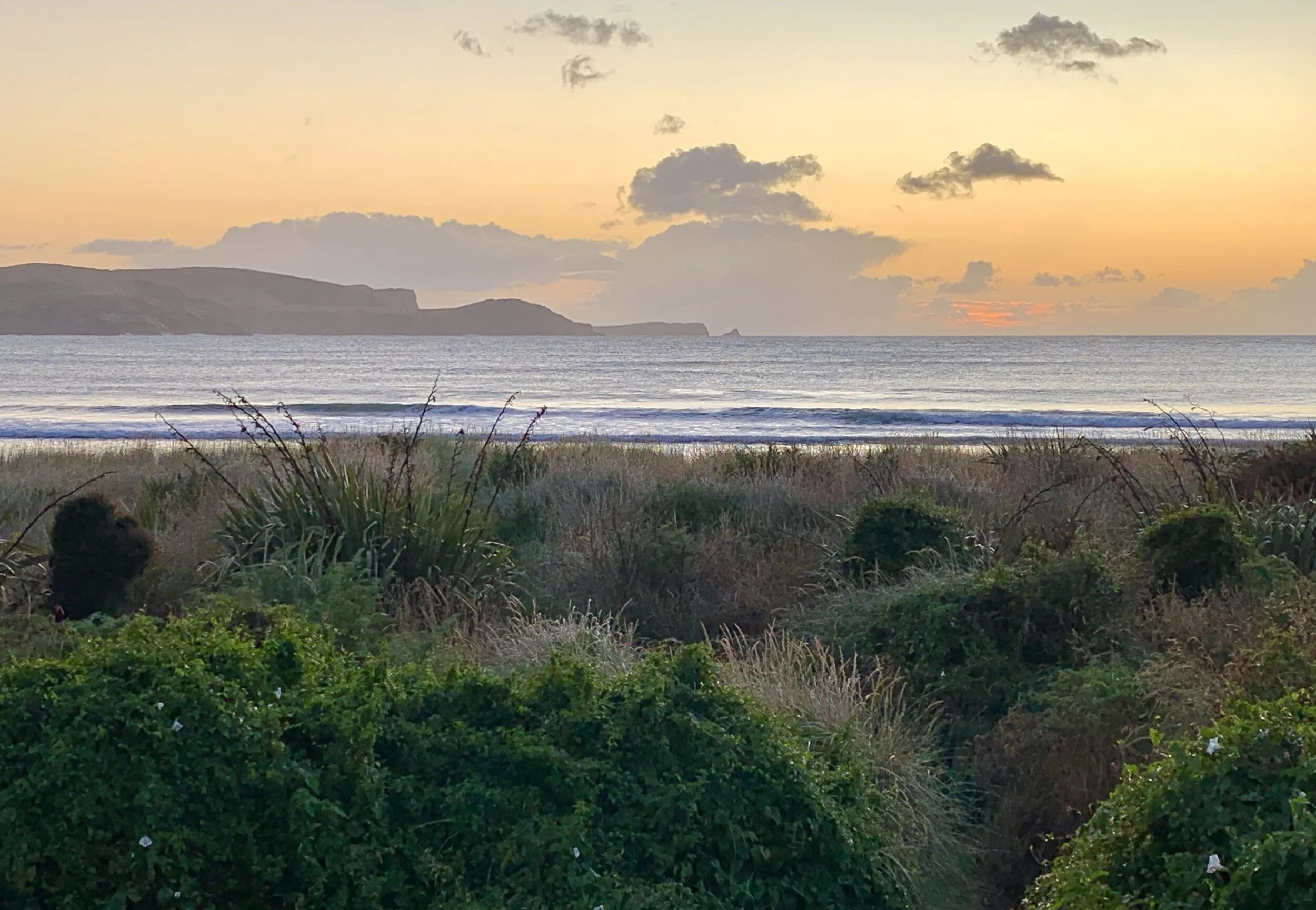Doubtful Sound
If you’ve ever thought about exploring South Island’s remote and spectacular Fiordland National Park, a World Heritage site, you might be more familiar with Milford Sound – said to be one of the world’s favourite travel destinations – than Doubtful Sound. Many argue Milford is the prettier. There was never any uncertainty in my mind, however, that Doubtful was where I would go: more remote = more difficult to get to = fewer people.
Technically, Doubtful Sound is not a sound, it’s not wide enough. It is a fiord; three times longer (40 km) and ten times the area of Milford Sound, and the deepest (421 metres) of South Island’s fiords. You cannot realistically get there under your own steam: from Te Anau we took two buses and two boats, and it cost a packet. I would, however, do it again in a heartbeat. There is little or no guarantee of good weather in this part of the world. We were fortunate, with fine sunshine for serried mountain backdrops and deep blue water; and misty stillness for wonderful early-morning reflections, for which I am forever on the lookout.
We left Te Anau by bus for Manapōuri, where we boarded a scenic cruiser across Lake Manapōuri, bound for West Arm. The Lake was pleasant enough, but it wasn’t Doubtful Sound: and I wasn’t interested in Manapōuri hydro power station because I was here for the natural world, not an engineered one. In a minibus we climbed steeply from West Arm, up and over Wilmot Pass on an unsealed 22-kilometre track constructed in the 1960s to transport heavy equipment shipped into Doubtful Sound for the hydroelectricity project. We stopped on the top, where there was almost an Uluru moment. This references the feeling I experienced the first time I espied Central Australia’s sacred landmark, from the air, as my plane circled to land at Yulara airport: a sense of awe, an indefinable, powerful emotion, plus anticipatory butterflies of excitement.
Love at first tingle
Our boat was waiting in Deep Cove. Safety instructions came first; then we found our cabin. Everything was efficiently run by friendly crew. We were off on a Southern Secret Doubtful Sound Overnight Cruise.
Pretty soon a lunch of freshly caught crayfish and a selection of delicious salads was served. There were ten guests (of a possible 12): four Brits (two of them Aussie-Brits), two Canadians and four Dutch. I didn’t want to rush lunch but I was ever-so-slightly anxious that potentially fabulous photographs were literally passing me by.
Doubtful Sound has several arms, and the itinerary varies: mention was made of trying to locate Bottlenose Dolphins. There were islands; waterfalls; hanging valleys; high craggy peaks; native-rainforested interleaving slopes creating beckoning corners. I spent a lot of time darting around the boat: I couldn’t photograph subjects quickly enough as we sailed through stunningly beautiful country.
Surrounding peaks rise 1,300–1,600 metres
James Cook sailed past the entrance to the Sound in 1770. He was anxious he would not be able to manoeuvre his sailing ship out of the narrow inlet – hence his name for it, Doubtful Harbour – and so he sailed on. The Māori name is Patea.
As in all the region’s fiords, the water of Doubtful Sound has two layers that do not mix. The top few metres are fresh water runoff from the surrounding slopes; below is saltwater from the ocean. After heavy rains, which transform waterfalls into spectacular features, fresh water may extend to a depth of 15 metres. Black coral usually occurs below 30 metres, but is found in New Zealand’s fiords as shallow as 5 metres because the upper, low-salinity layer absorbs light.
Despite the remoteness of Doubtful Sound – there are no coastal settlements for 200 km in either direction – there is an environmental impact of concern, namely the discharge of water from Manapōuri hydroelectric power station, released into Deep Cove via two tailrace tunnels. This disrupts the natural layering of the Sound and water temperatures, thus impacting fauna and flora. Unintended consequences are seldom of benefit to a pristine environment such as this. New Zealand’s southernmost population of Bottlenose Dolphins – which is more insular than other groups for a number of reasons – has been in significant decline since 1990, largely due to increased calf mortality. An expansion of tourism, the longterm effects of fishing on the fiord’s ecology, and the power station discharge are believed to be responsible. (Read more here.)
We sailed along Doubtful Sound as far as Pendulo Reach at the eastern end of the large Secretary Island. Pendulo Reach led us into Thompson Sound, at the western end of which was the Tasman Sea. I was hoping we would venture out into the Tasman, but it was not to be. We were told it was choppy and people might fall over, or even be sick. I was prepared to risk either, but the skipper wasn’t. I battled disappointment as he turned the vessel around: an opportunity missed. I looked back in angst.
Hardly a large swell
We headed back down Thompson Sound, but soon anchored so that those who were inclined could cast a line. At Pendulo Reach we veered left into Bradshaw Sound, at the end of which was Gaer Arm, our refuge for the night. The fish were served for dinner as we sailed into evening.
My mission throughout the trip had been an in-focus capture of a gull following.
As we dropped anchor for the night, a few folks kayaked in the stillness, making scarcely a sound. I was intent on capturing the pink serenity before it darkened.
A feeling that all was well with the world was a good note on which to end the day.
We slept Soundly until awakened at 05:45 by the boat’s engine, and were underway pretty quickly. I had to get out on deck to assess the picture potential. The sun peeped over mountain tops and crept down to the water’s edge. It lingered for a few moments in a hanging valley. All was calm.
Unfortunately, all good things must come to an end. We were not the only boat heading back to Deep Cove. I couldn’t remember feeling so reluctant to leave a place.
‘The Sound of Silence’, as Doubtful is sometimes known, was a serenely beautiful sanctuary from the world for a day and a half. Long may it remain a Southern Secret. As I struggle to describe it adequately, I am reminded of the words of my favourite cartoonist, First Dog on the Moon, after he escaped the hubbub of life to Tasmania’s Huon Valley: ‘Don’t come down here I don’t recommend it at all it is terrible’!



